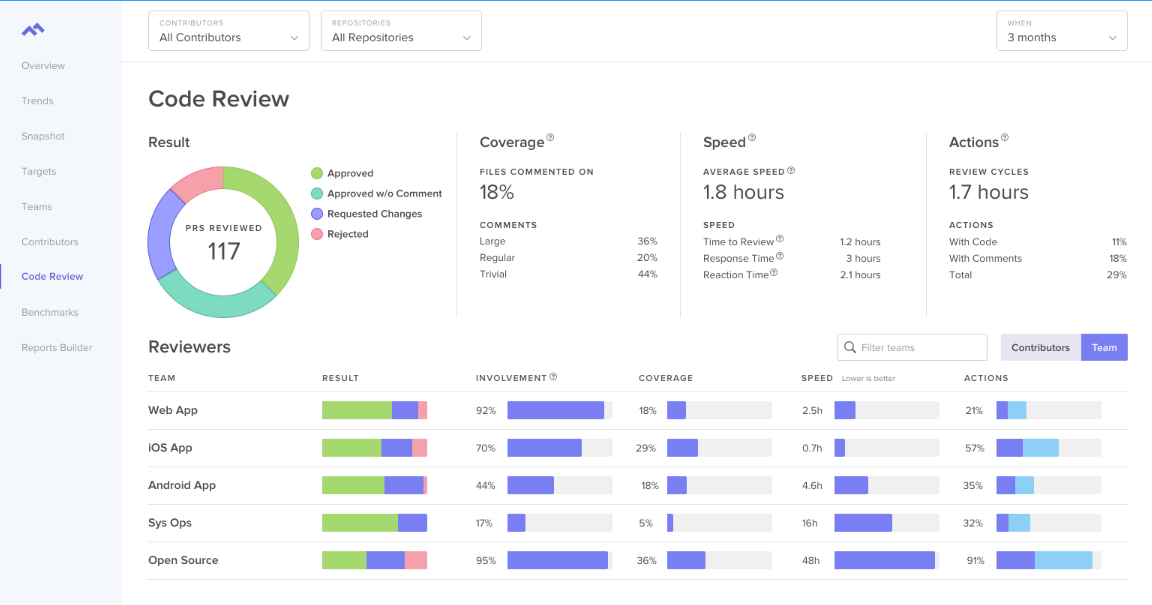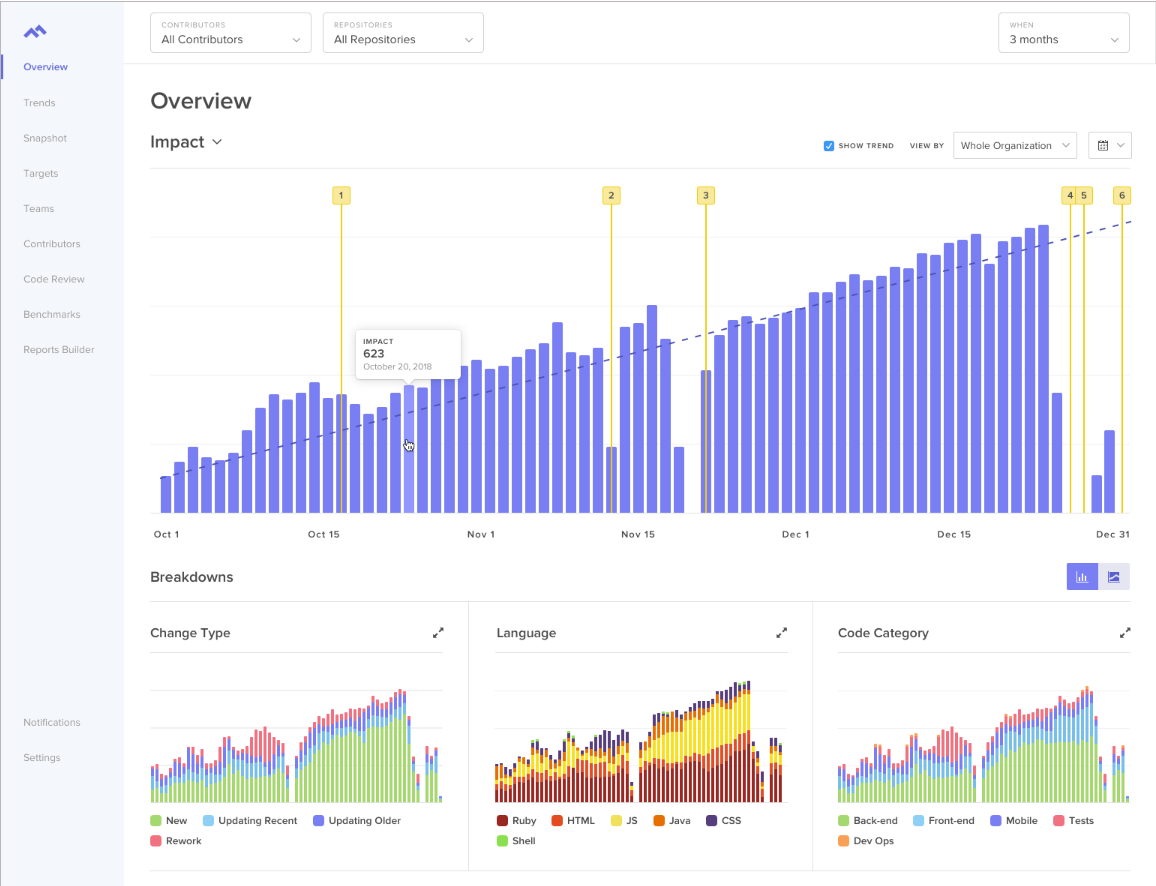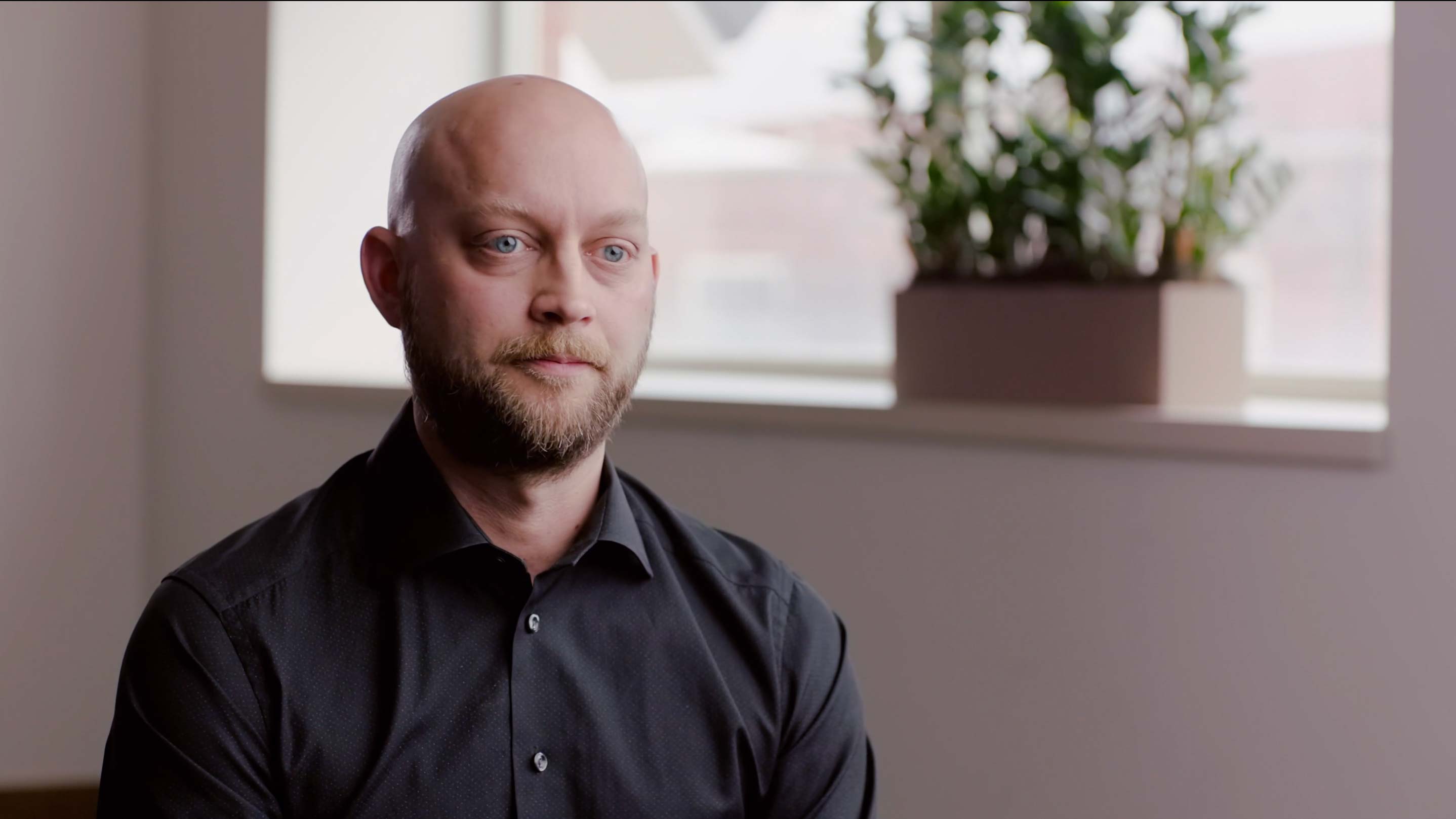The Solution
Roger used Velocity to create a blueprint for better Agile processes across the org.
Roger was skeptical of engineering metrics. He told us, “Metrics like lines of code or tickets closed aren’t that meaningful because they tend to reward being busy, not necessarily working smart.” But he was willing to try Velocity because he was eager to try anything that would help him determine whether process changes were effective.
Roger started using Velocity on a weekly basis, looking at Pull Request Throughput and Cycle Time. Velocity let Roger compare these metrics across teams to easily distinguish which teams were highly productive. Roger tells us, “Although I was skeptical at first, I’m now a true believer in Velocity metrics. Measurement helped us find focus. We saw what agile practices were working and shared them across teams.”
One of Roger’s findings was that less efficient teams experienced a lack of clarity around stories. Engineers were often working with vague stories causing lengthy review cycles and misalignment within engineering about what they were working on.
Roger worked with his engineering leads and product managers to create a standard for stories. Product and Engineering teams were encouraged to come up with 1-sentence actionable requests and decompose projects estimated above 20 effort points into a set of smaller, independent stories.
With stronger processes in place, Roger felt that he could confidently set out to scale his engineering department.



